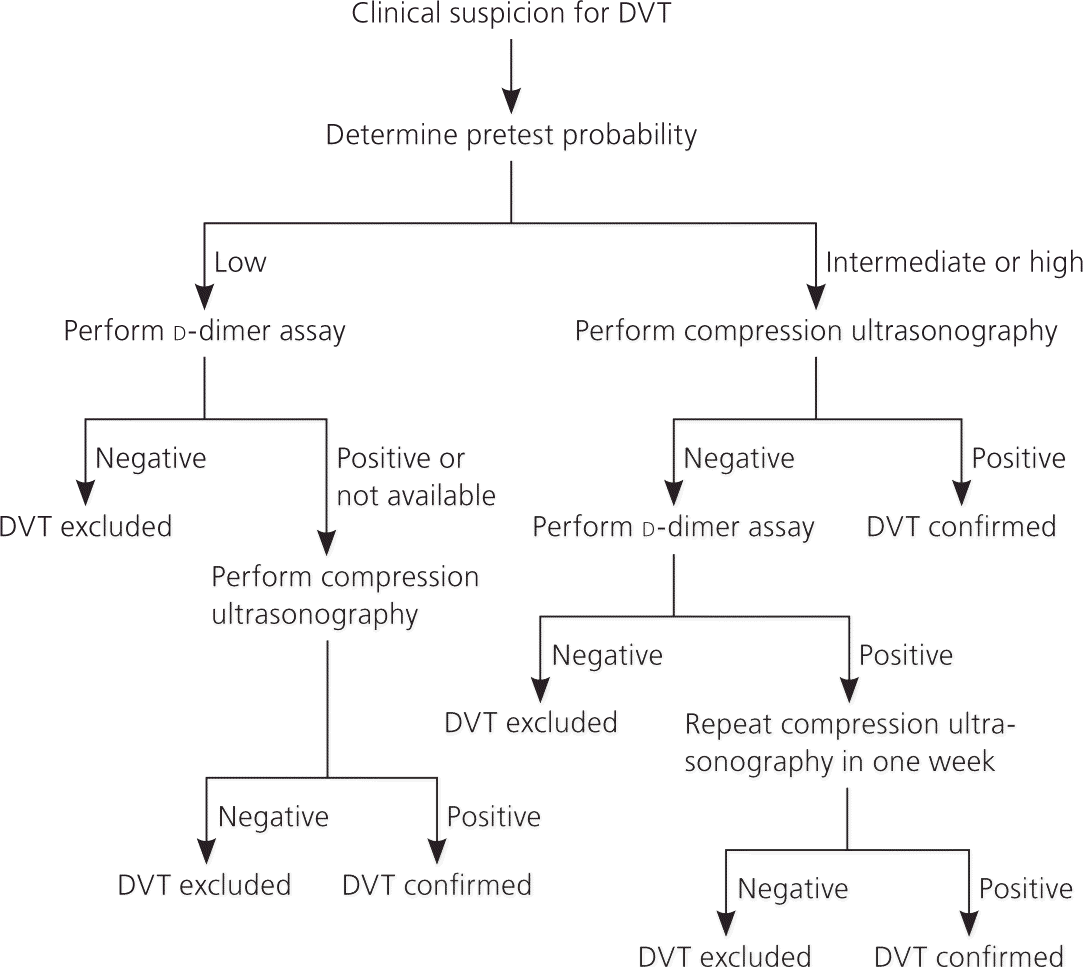Diagnosis of DVT
Now let’s talk about the diagnosis. A study that we found recommended that if the signs and symptoms for DVT are rather weak, and the probability that the patient may not have DVT is high, then a d-dimer test should be conducted. And if the said test comes out negative, then the patient didn’t have DVT, but if it comes out positive, then Further tests should be conducted. Such tests may include compression ultrasonography. But, ultrasound is recommended for patients who have a moderate to high possibility of having DVT. This can be decided based on past medical and surgical history, as well as signs and symptoms presented to physicians. Your physician will decide whether to go with an ultrasound from the start or not [1].
To verify the existence of DVT, diagnostic imaging is frequently used. Since it is secure, readily available, cost-effective, and dependable, ultrasound is the first-line imaging technique for diagnosing proximal DVT [2].
Let’s briefly discuss some imaging diagnostic techniques to be aware of. First of all, ultrasonography or ultrasound. Ultrasonography is the most accurate, sensitive, and precise test for those patients who have visible signs and symptoms of DVT. Compared to ultrasonography, compression ultrasonography is less accurate. Impedance plethysmography is also pretty accurate but because it is not that easily available in most hospitals, its use is limited [3].
Contrast venography has been widely accepted as the gold standard for detecting DVT. But, owing to the invasiveness, technological challenges, and hazards, it is not suggested in the first examination. If clinical suspicion is strong and noninvasive testing is conflicting or inconclusive, or when noninvasive diagnostics cannot be done, venography is considered. Hence, it is pretty much used as a last resort [4].
Diagnosis of Deep Venous Thrombosis

Figure 1 Guideline for diagnosis of DVT [5]
References
- Qaseem, A., et al., Current diagnosis of venous thromboembolism in primary care: a clinical practice guideline from the American Academy of Family Physicians and the American College of Physicians. Ann Fam Med, 2007. 5(1): p. 57-62.
- Min, S.-K., et al., Diagnosis and treatment of lower extremity deep vein thrombosis: Korean practice guidelines. Vascular specialist international, 2016. 32(3): p. 77.
- Wells, P.S., et al., Accuracy of ultrasound for the diagnosis of deep venous thrombosis in asymptomatic patients after orthopedic surgery. A meta-analysis. Ann Intern Med, 1995. 122(1): p. 47-53.
- Kearon, C., et al., Noninvasive diagnosis of deep venous thrombosis. McMaster Diagnostic Imaging Practice Guidelines Initiative. Ann Intern Med, 1998. 128(8): p. 663-77.
- Wilbur, J. and B. Shian, Diagnosis of deep venous thrombosis and pulmonary embolism. Am Fam Physician, 2012. 86(10): p. 913-9.

